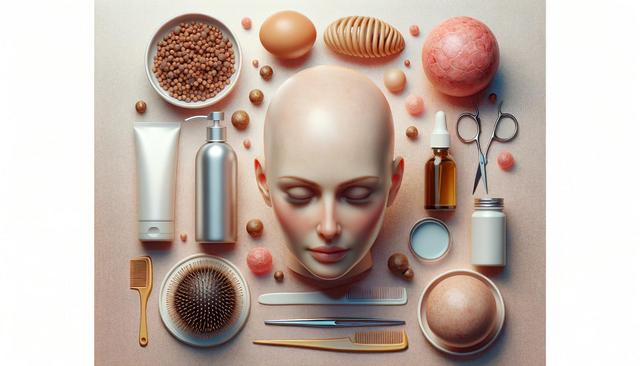What is Alopecia and Why Does It Occur?
Alopecia refers to hair loss that can affect the scalp or other parts of the body. While it can affect anyone, it often begins gradually and may become more noticeable over time. There are several types of alopecia, with the most common being alopecia areata, an autoimmune condition where the immune system attacks hair follicles. Other forms include androgenetic alopecia (pattern baldness) and traction alopecia, which results from repeated stress on the hair.
Common causes of alopecia include:
- Genetic predispositions
- Autoimmune disorders
- Hormonal imbalances
- Nutritional deficiencies
- Stress and certain medications
Understanding the underlying cause is often the first step in determining the most appropriate treatment plan. A dermatologist or healthcare provider typically conducts a physical exam, reviews medical history, and may order blood tests or scalp biopsies to make a diagnosis.
Topical and Oral Medications
One of the primary approaches to treating alopecia involves pharmaceutical interventions. Topical treatments are commonly used for mild to moderate hair loss and are available over the counter or by prescription. These include solutions and foams applied directly to the scalp to stimulate hair growth and slow down hair loss progression.
Oral medications are another option and may be prescribed when topical treatments are ineffective or when hair loss is more widespread. These medications work by altering hormonal levels or suppressing the immune system to prevent further damage to hair follicles. It’s important to note that results may vary and can take several months to become noticeable.
Some commonly prescribed options include:
- Topical immunotherapy agents
- Anti-inflammatory drugs
- Hormone-regulating medications
Patients should always consult with a healthcare professional before starting any treatment, as these medications may have side effects or interact with other prescriptions.
Non-Medication Treatments and Therapies
In addition to medications, a variety of non-pharmaceutical interventions may support hair regrowth or help manage alopecia. Light-based therapies, for example, utilize low-level lasers or LEDs to stimulate follicular activity. These therapies are often conducted in medical settings but are also available in consumer-grade devices for at-home use.
Another promising option is microneedling, a technique that uses tiny needles to create micro-injuries in the skin, potentially boosting collagen production and enhancing the absorption of topical treatments. Platelet-rich plasma (PRP) therapy is also gaining attention. In this procedure, a patient’s blood is processed to concentrate platelets, which are then injected into the scalp to encourage hair growth.
Popular non-invasive treatment options include:
- Low-level laser therapy (LLLT)
- Microneedling
- Platelet-rich plasma (PRP) therapy
- Scalp massage and aromatherapy
These treatments often require multiple sessions and may be used in combination with medications for more comprehensive results.
Lifestyle Adjustments and Nutritional Support
Healthy lifestyle habits can play a supportive role in managing alopecia. Although not a substitute for targeted treatments, proper nutrition and self-care may improve overall hair health and help reduce further loss. A balanced diet rich in vitamins and minerals is essential to maintaining healthy hair follicles.
Key nutrients for hair health include:
- Iron
- Vitamin D
- Zinc
- Biotin (Vitamin B7)
- Omega-3 fatty acids
In addition to dietary changes, managing stress through mindfulness practices, regular exercise, and sufficient sleep can have a positive impact. Stress is a known trigger for certain types of alopecia, and reducing it may prevent flare-ups or worsening symptoms.
Consulting with a registered dietitian or a healthcare provider can help determine if dietary gaps exist and whether supplementation could be beneficial.
Cosmetic Solutions and Emotional Support
For those experiencing significant hair loss, cosmetic and psychological support can be just as important as medical treatments. Wigs, hairpieces, and scalp concealers offer immediate and non-invasive ways to manage the visible effects of alopecia. Modern options are available in a range of textures, colors, and styles, often providing a natural appearance and greater confidence.
Equally important is the emotional well-being of individuals dealing with alopecia. The psychological impact of hair loss can be profound, affecting self-esteem and social interactions. Support groups, therapy, and online communities can offer encouragement and shared experiences that help individuals feel less isolated.
Supportive resources may include:
- Licensed therapists specializing in body image or chronic conditions
- Peer support groups (in-person or online)
- Professional wig fitting services
- Educational workshops about coping with hair loss
Taking a holistic approach that includes both physical and emotional care can greatly improve the quality of life for those affected by alopecia.


